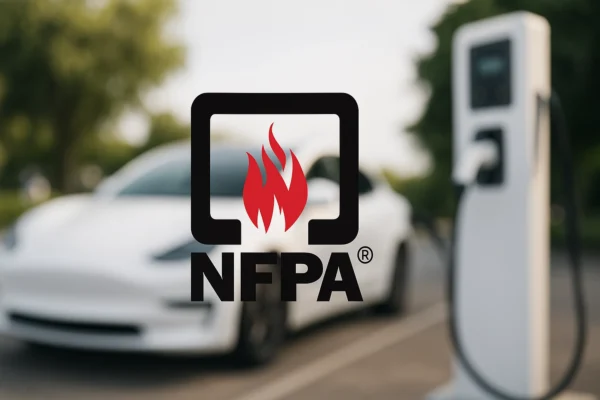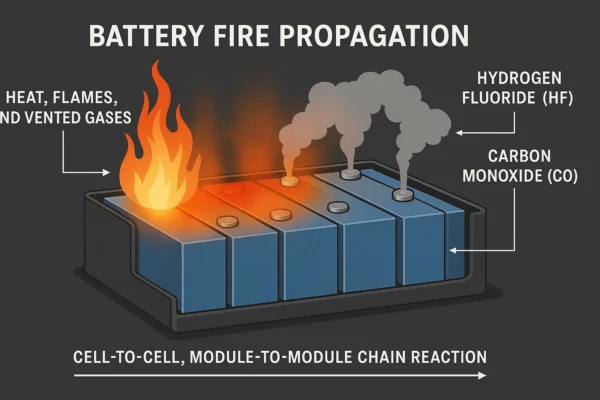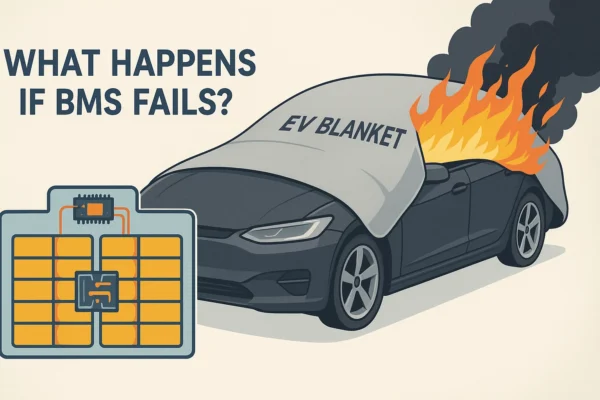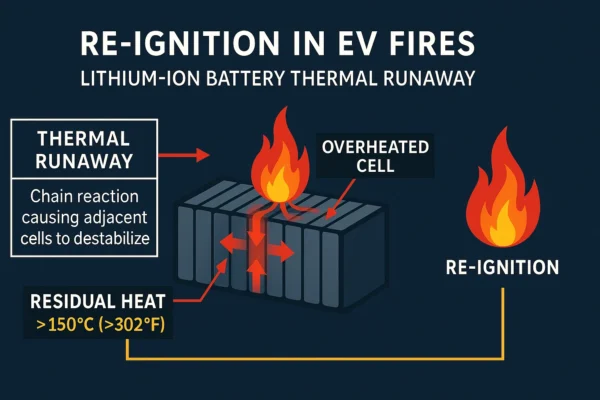In moments of crisis, the simplest tools are often the most effective. Imagine a small kitchen fire rapidly escalating into flames. Instinctively, you might reach for water, but doing so can make the situation worse. Fire extinguisher is a good choice (if your site is equipped with it), but whether it is a dry chemical fire extinguisher or a wet fire extinguisher, it is quite tricky to deal with the “remaining situation” after use.This is where the fire blanket—a tool often underestimated—proves to be a life-saving solution. Similarly, in scenarios involving lithium battery thermal runaway or electric vehicle (EV) fires, fire blankets have become indispensable for rapid response.
Specifically designed for these hazardous conditions, fire blankets are among the most effective fire safety tools available. Whether dealing with grease fires or the uncontrollable flames from a battery failure, fire blankets made from specialized, fire-resistant materials offer an immediate and practical solution. In emergencies, an emergency fire blanket can even be used to wrap around a person for protection from heat and flames.
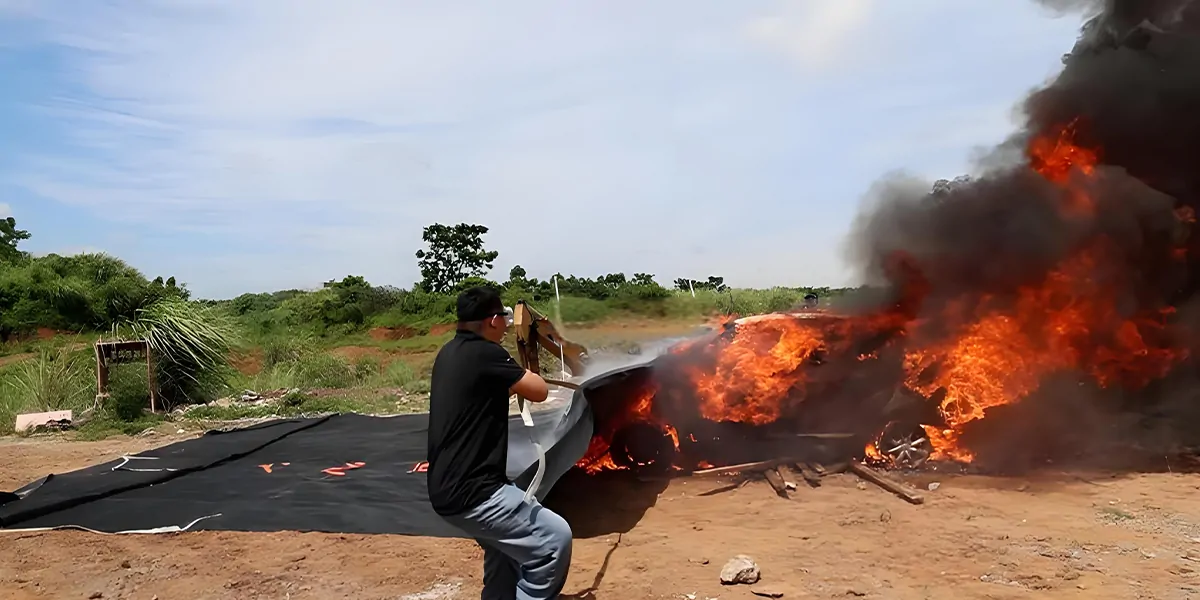
However, one critical question often arises: Can fire blankets be reused? This is an important consideration for both households and industries. Are fire blankets reusable? The answer depends on several factors, such as the type of blanket, the specific fire scenario, and the extent of its exposure to flames. In this guide, we’ll explain how fire blankets work, how they handle different types of fires, and whether or not you can reuse a fire blanket more than once.
How Do Fire Blankets Work?
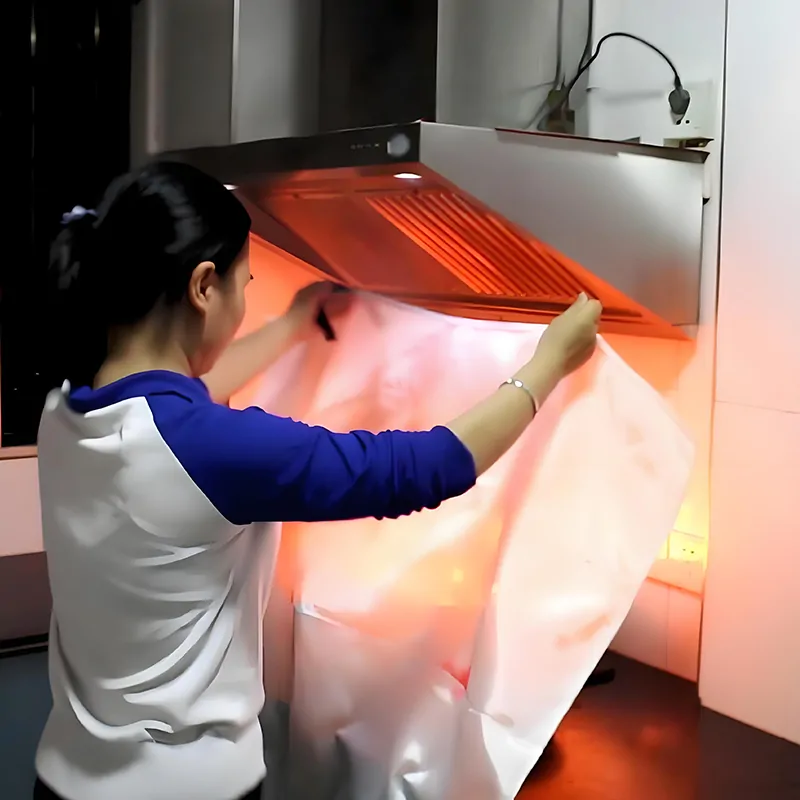
Understanding how fire blankets work is essential for proper use during emergencies. Fire blankets operate using the principle of oxygen deprivation. By completely covering the flames, an emergency fire blanket blocks the oxygen supply necessary for combustion, extinguishing the fire. This mechanism is effective for small fires and for protecting individuals from burns.
Fire blankets are designed to handle different types of fires, such as grease fires or those involving high temperatures. For example, they can extinguish grease fires quickly, making them an invaluable tool in kitchens. When deployed properly, fire blankets not only stop flames but also prevent fires from spreading. They act as a fire-resistant shield, giving users critical time to act during emergencies.
Fire blankets come in two main types, each optimized for specific applications:
Fiberglass Fire Blankets:
Fiberglass blankets are made from woven fiberglass fabric, effective in household or light industrial settings. They can withstand temperatures of up to 550°C (1,022°F) and are ideal for extinguishing small fires like grease fires or clothing fires.Composite Fire Blankets:
Made from advanced materials such as silica fabric, composite fire blankets can endure extreme high temperatures of up to 1,200°C (2,192°F). They are commonly used in industrial environments or for put out EV or lithium battery fires. Composite fire blankets often include flame-resistant coatings like silicone or vermiculite for enhanced durability and performance.
Can You Use a Fire Blanket More Than Once?
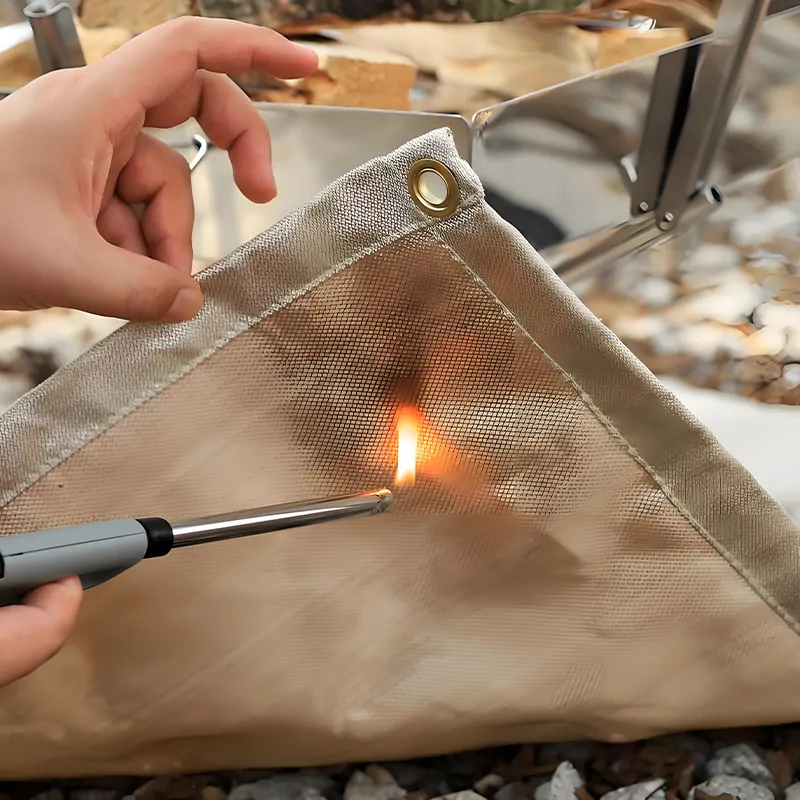
Fire blanket reusability depends on material type, fire exposure duration, and structural integrity after use. Safeprotex’s NFPA 701, ASTM E84, and EN 1869-certified reusable fire blankets undergo extensive fire endurance testing to determine safe reuse limits.
Fiberglass fire blankets are ideal for grease fires and small fires like clothing fires but degrade under 550°C (1,022°F) flame exposure, losing 40% tensile strength even when no visible damage is present. While reusable fire blankets may be reused 3–5 times for non-contact applications, direct exposure requires immediate replacement for safety. If someone’s clothing catches fire, using the drop and roll technique combined with an emergency fire blanket can quickly smother the flames and prevent severe burns. However, it is not recommended to reuse a fire blanket after direct flame exposure.
Composite fire blankets, designed for EV battery fires and industrial hazards, withstand over 1,100°C (2,012°F). Safeprotex testing confirms that:
- Silicone-coated fiberglass blankets are single-use due to surface degradation in prolonged exposure.
- Silicone-coated high-silica blankets can be reused if exposure remains under 15 minutes at 1,100°C and post-use inspections show no material failure.
- Graphite-coated high-silica blankets retain 85% integrity after 30 minutes at 1,200°C (2,192°F), making them suitable for multiple uses in controlled conditions.
To ensure fire safety compliance, inspect blankets after each use for fiber weakening, coating deterioration, or heat damage. Using a compromised fire blanket in high-temperature conditions increases fire penetration risks—always replace when in doubt.
| Scenario | Material / Coating | Performance | Reusability |
| EV Car Fire (Battery Thermal Runaway) | High-silica with vermiculite or silicone coating | Handles extreme heat (up to 1,200°C / 2,192°F), contains flames and fumes | Single-use |
| Lithium Battery Fire (e.g., Power Banks, E-Bikes) | Silicone or graphite-coated composite | Suppresses flames, traps toxic fumes | 1-3 uses if undamaged, but often single-use |
| Kitchen Grease Fire | Woven fiberglass fabric | Smothers flames quickly; prevents grease re-ignition | Single-use (due to grease contamination) |
| Clothing Fire | Glass fiber or silicone-coated blanket | Wraps around the person to extinguish flames; provides protection from burns | Single-use |
| Welding Spark Protection | Silicone or graphite-coated composite | Shields against sparks, slag, and radiant heat | 1-3 uses if coating remains intact |
| Industrial Molten Metal Splash | High-silica with vermiculite coating | Protects against splashes of molten metal (up to 1,300°C / 2,372°F) | Single-use (due to extreme exposure) |
| Radiant Heat Shielding (e.g., Furnace Maintenance) | High-silica or silicone-coated fiberglass | Reflects heat; prevents heat transfer | 3-5 uses, depending on wear |
| Small Equipment Fire (e.g., Labs) | Silicone-coated fiberglass | Covers and smothers localized equipment fires | 1-3 uses (with detailed inspection) |
| Toxic Chemical Fire Suppression | Graphite-coated composite | Smothers flames and resists chemical corrosion; traps fumes | 1-3 uses if undamaged |
How to Ensure a Fire Blanket Remains Functional
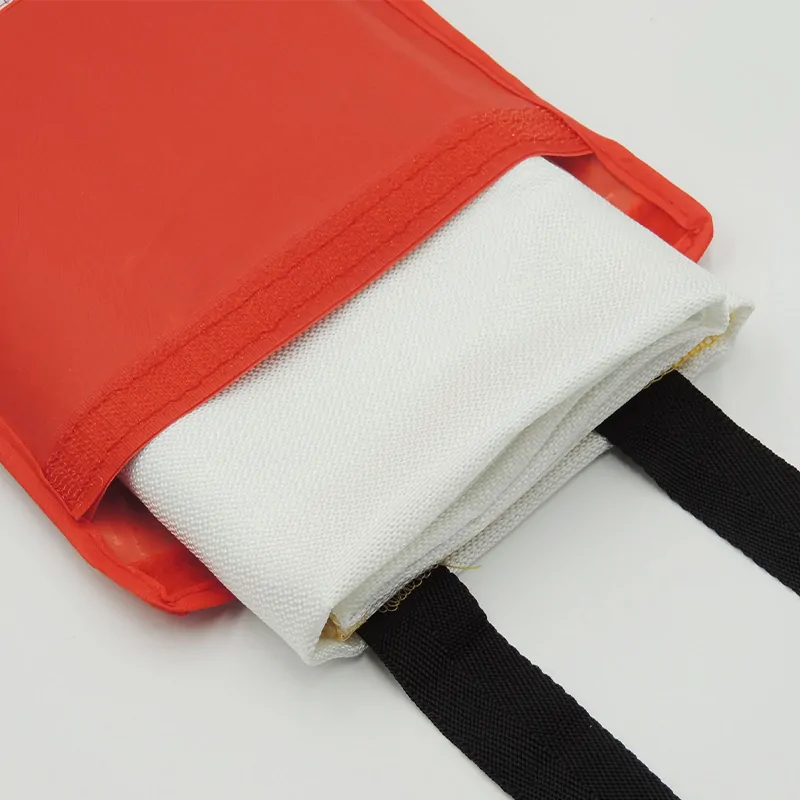
To maintain the effectiveness of a fire blanket, regular inspection and proper storage are essential. Follow these steps to ensure your blanket remains fire-resistant and ready to handle emergencies:
Inspect for Physical Damage:
- Check for wear and tear, holes, or burn marks that could compromise the blanket’s performance.
- For composite blankets, ensure coatings are free from peeling, cracking, or discoloration.
Assess Structural Integrity:
- Ensure the fabric remains flexible and thick. Stiff or brittle material may indicate degradation from heat or improper storage.
Check for Contaminants:
- Fire blankets exposed to grease, oil, or chemicals may become unsafe to reuse.
- Look for scorch marks or burnt smells that indicate previous fire exposure.
Store Properly:
- Store fire blankets in their original pouch in a cool, dry location, away from moisture and direct sunlight. Poor storage conditions can weaken their fire-resistant properties.
Follow Manufacturer Guidelines:
- Always adhere to the manufacturer’s recommended lifespan (typically 5–10 years) and usage instructions. Even undamaged blankets should not exceed their intended lifespan.
How to Maintain a Fire Blanket
Proper maintenance is critical to extending the life and effectiveness of your fire blanket:
- Inspection: Check for physical damage, such as tears or worn edges, and ensure any fire-resistant coatings are intact.
- Avoid Improper Use: Fire blankets should only be used for shielding, smothering flames, or emergency fire situations. Techniques like drop and roll should be practiced for personal fire safety.
- Replacement: Replace any blanket that has been directly exposed to high temperatures or damaged in use. Follow the manufacturer’s recommended lifespan.
Are fire blankets reusable? The answer depends on the type of blanket and how it was used. Fiberglass blankets, while effective for small fires like grease fires, are usually not reusable after flame exposure. Composite blankets may be reused for non-contact scenarios but are often single-use when exposed to high temperatures or severe fire conditions.
At Safeprotex, as a professional fire blanket manufacturer, we have most types of fire blankets on the market, but in the end, our expertise and service are the key to our success. Discuss with Safeprotex’s experts or visit our fire blanket store to be prepared before a disaster occurs.

